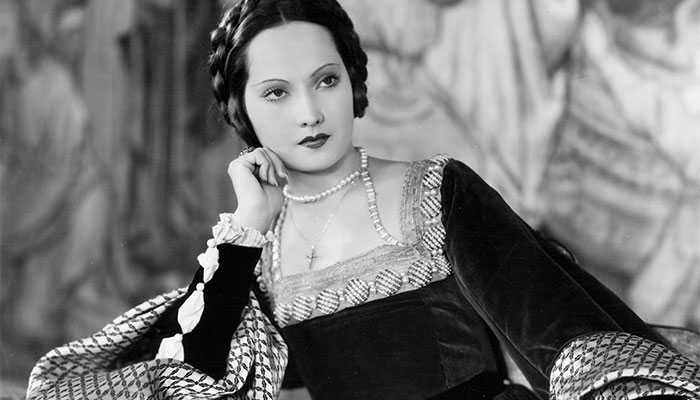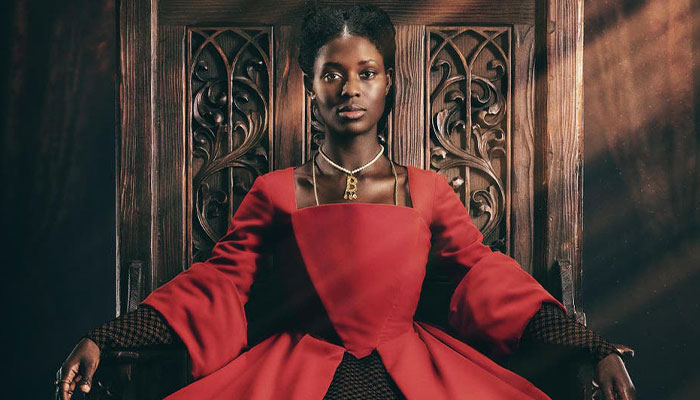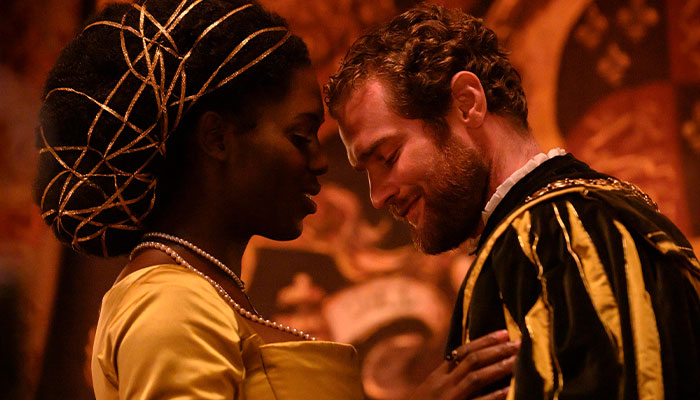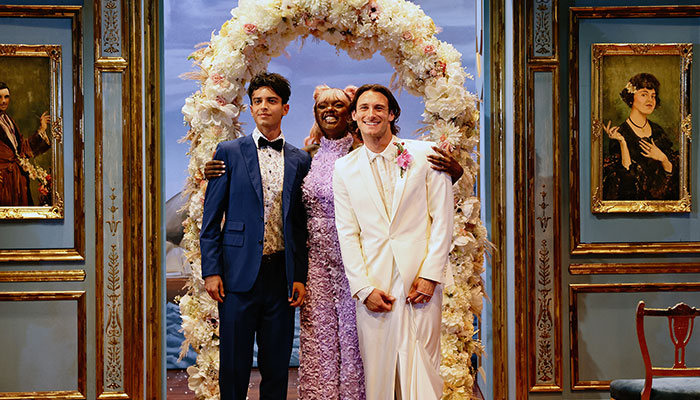The story of the rise and fall of Anne Boleyn, Henry VIII’s second and most infamous wife, has beguiled audiences for centuries. From the poetry of Sir Thomas Wyatt in the 16th century to the sexed-up Showtime series The Tudors (2007-2010), there has been no shortage of representations of Anne Boleyn in books and on the screen. Our desire to see dramatisations of her life and death is apparently inexhaustible.
This month, a new adaptation, simply called Anne Boleyn, is coming to our screens. One of the inaugural offerings of the new streaming service (another one?!) Paramount Plus, the Channel 5 series stars Jodie Turner-Smith (Queen and Slim) as Anne, with the popular historian Dan Jones serving as executive producer.
Predictably, much of the public conversation around the series has centred on the fact that Turner-Smith, a black actor, was cast as Anne Boleyn. The show adopts a colour-blind casting strategy, with numerous characters portrayed by diverse actors.
The turn towards diversity in casting has increasingly become a feature of period dramas, with the Netflix romance Bridgerton, for instance, casting Regé-Jean Page as the Duke of Hastings.
However, those who know their film history would know that this is not the first time that Anne Boleyn has been portrayed by an actor of colour. Merle Oberon played Anne Boleyn in Alexander Korda’s 1933 film The Private Life of Henry VIII. Oberon was of Anglo-Indian descent, but claimed to be Australian in order to mask her ethnicity.

'Dark beauty': Merle Oberon, of Anglo-Indian descent, played Anne Boleyn in 1933.
The musical Six, which reimagines the wives of Henry VIII as pop stars, also regularly casts diverse actors, ensuring that all Henry’s queens have been variously portrayed by women of colour.
It also makes a certain kind of sense to cast a black actor to play Anne. In her own time, much was made of Anne’s youth and education in France; she was said to be more worldly, fashionable and charismatic because of her continental upbringing.
Casting black actors as members of the Tudor court is also a timely reminder that the past was not as ethnically homogenous as some might like to think.
Many adaptations of Anne’s story have also made much of Anne’s dark beauty, in comparison to the peaches-and-cream English rose complexion favoured at the time. While having brown hair is clearly not comparable to being racially othered, the decision to cast Turner-Smith allows the show to mark Anne out as distinct from the women who surround her.
Casting black actors as members of the Tudor court is also a timely reminder that the past was not as ethnically homogenous as some might like to think. As Olivette Otele and Miranda Kaufman have recently shown, there is a long history of African presence in England, including within Henry VIII’s court.
A public unravelling
In Turner-Smith’s capable hands, Anne Boleyn is intelligent, savvy, vulnerable, devout and opinionated. The series opens in the final months of Anne’s life, in early 1536. That we already know the familiar contours of the story is signalled by the fact that the first episode starts with Anne receiving a guilty verdict, only to track back in time to January that year, when Anne was expecting a baby. As the title card says, “Anne is the most powerful woman in England”.

Fresh take: Jodie Turner-Smith delivers a strong, intelligent performance as Anne Boleyn. Photo credit: ViacomCBS/Channel 5
From this point on, events unravel rapidly. The series does a good job in showing how quickly events spun out of control for Anne. In one of the series’ best scenes, the camera spans slowly around the Tudor court as Anne overhears snatches of gossip about her. She sits uneasily in the throne, aware that her power rests on a very uneasy edifice.
As was also the case in Hilary Mantel’s award-winning Wolf Hall, her chief adversary is Cromwell (played by Barry Ward), Henry’s chief minister. Cromwell is here a cruel and manipulative schemer who reminds her that, “your influence lies in your belly, not your brain”.
Her marriage falls apart while she is still physically suffering from the emotional aftershocks of a traumatic and painful miscarriage.
For a woman in this claustrophobic and patriarchal world, being smart is not enough. As Anne says, “I have dreamt of flying, when people told me that I should be happy with the nest.”
The series is also quite unique in its emphasis on Anne’s last pregnancy and miscarriage. While many other adaptations of her story tie Anne’s downfall to her miscarriage in January 1536, shortly after Henry has a jousting accident, Anne Boleyn emphasises the physical and emotional toll that this incident has on Anne. Her marriage falls apart while she is still physically suffering from the emotional aftershocks of a traumatic and painful miscarriage.
Power-player, not sex pot
The series is also admirably disinterested in Anne’s reputation as a femme fatale. While there are some sexually charged scenes, including one in which Anne briefly kisses Jane Seymour, Anne Boleyn is much more interested in Anne as a power-player than sex pot.

Sizzle and lop: Turner-Smith and Mark Stanley as Henry VIII. Photo credit: ViacomCBS/Channel 5
Turner-Smith has considerable chemistry with Mark Stanley’s Henry VIII, but their relationship is largely underplayed so as to focus on Anne’s precarious position within the world of the Tudor court.
Another welcome addition to the story is the emphasis placed on Anne’s relationship to the women around her. The best scenes in the series are those in which she shares night-time confidences with her ladies-in-waiting; perhaps the only opportunity Anne has to be honest and vulnerable with those around her.
Anne Boleyn’s story has been dramatised so often that it is very hard to approach the material with fresh eyes. Anne Boleyn, however, manages to look and feel quite different to any Anne Boleyn film you might have seen before, thanks to Turner-Smith’s strong, intelligent and understated performance.
There are some familiar beats that the show hits, of course, and I personally found it a bit disappointing that the show repeats the now discredited belief that Jane Boleyn, Anne’s sister-in-law, plotted the demise of Anne and her husband. However, on the whole, the show delivers on its promise to bring a new perspective to this most well-known of tales.
Definitely recommended for lockdown viewing, even if you think you’ve seen all things Anne Boleyn before.

Dr Stephanie Russo (pictured) is Discipline Chair, Literature, in the Department of Media, Communications, Creative Arts, Language and Literature, and is the author of The Afterlife of Anne Boleyn: Representations of Anne Boleyn in Fiction and on the Screen (Palgrave Macmillan).



